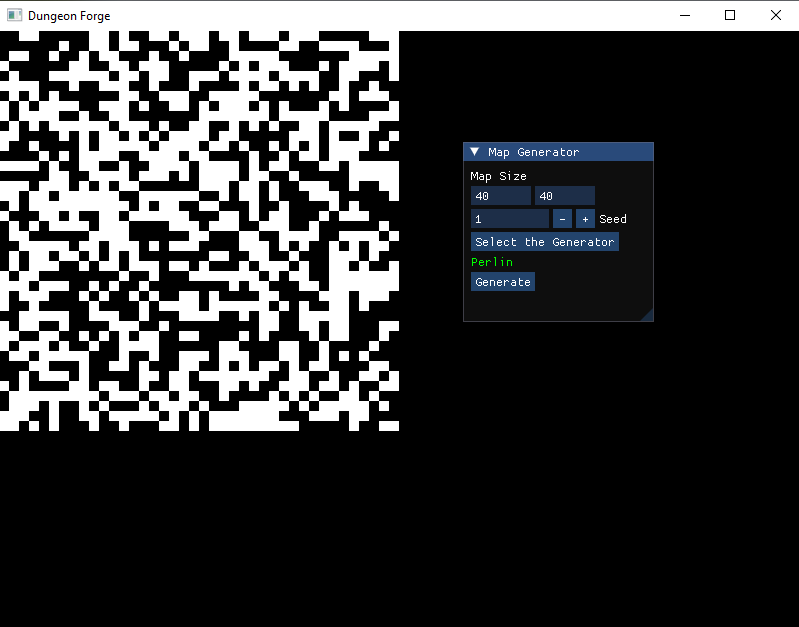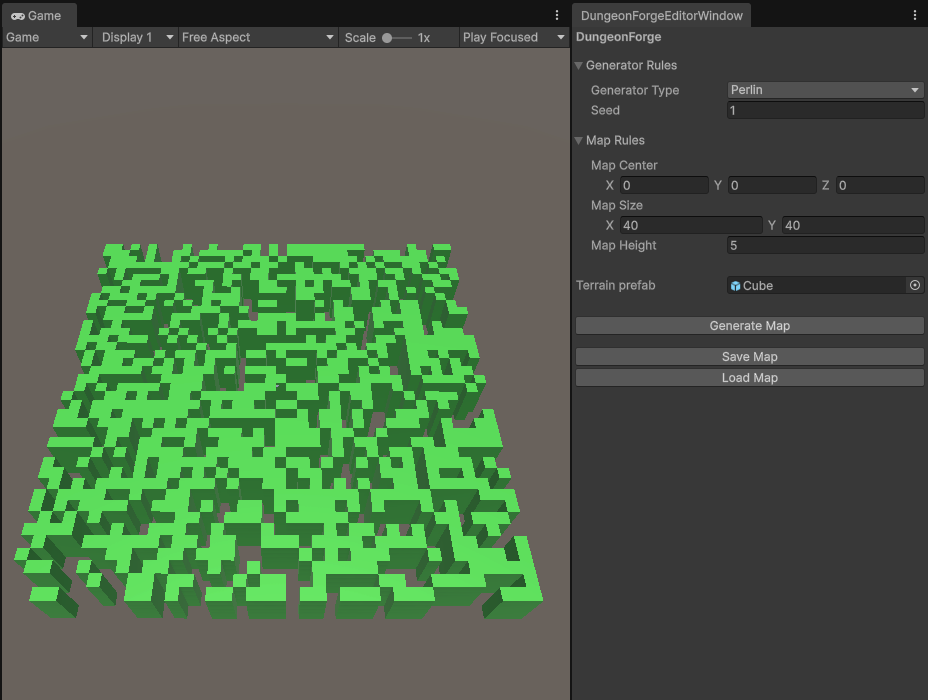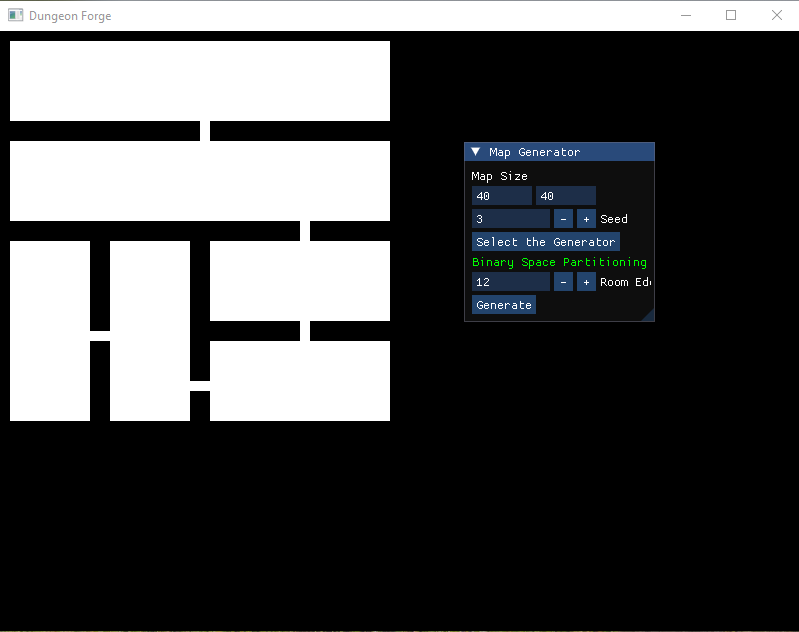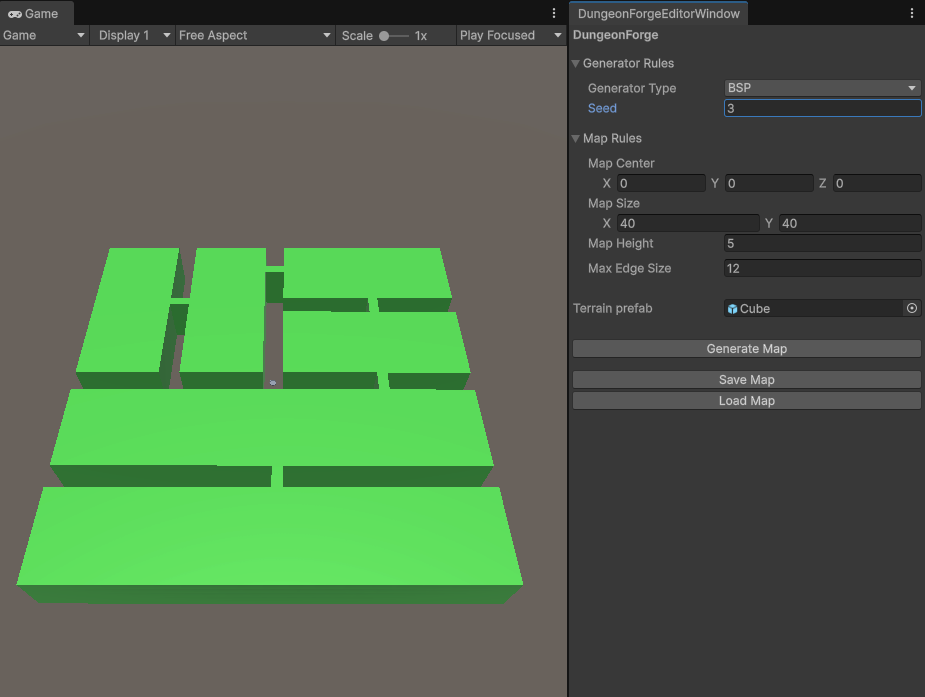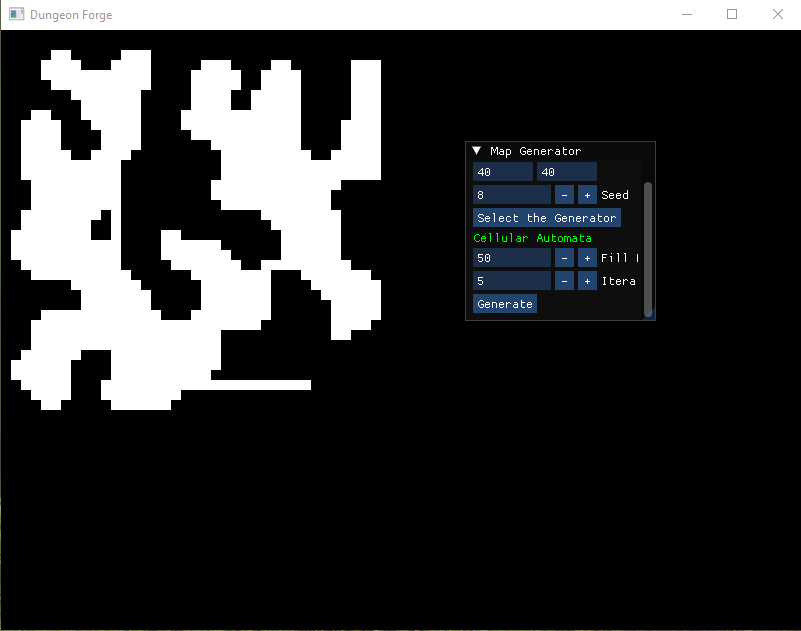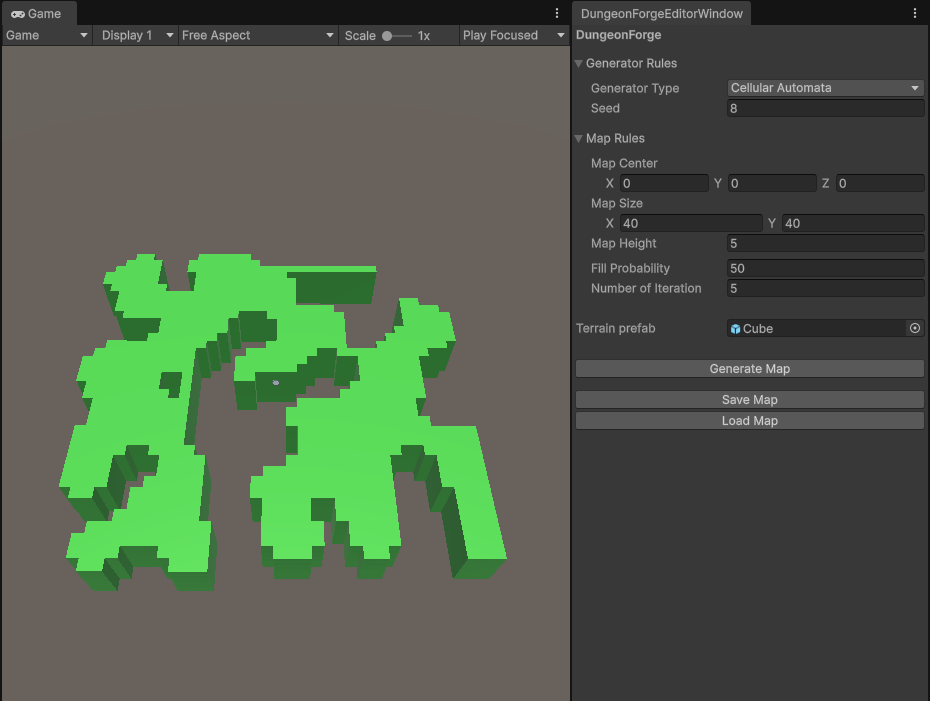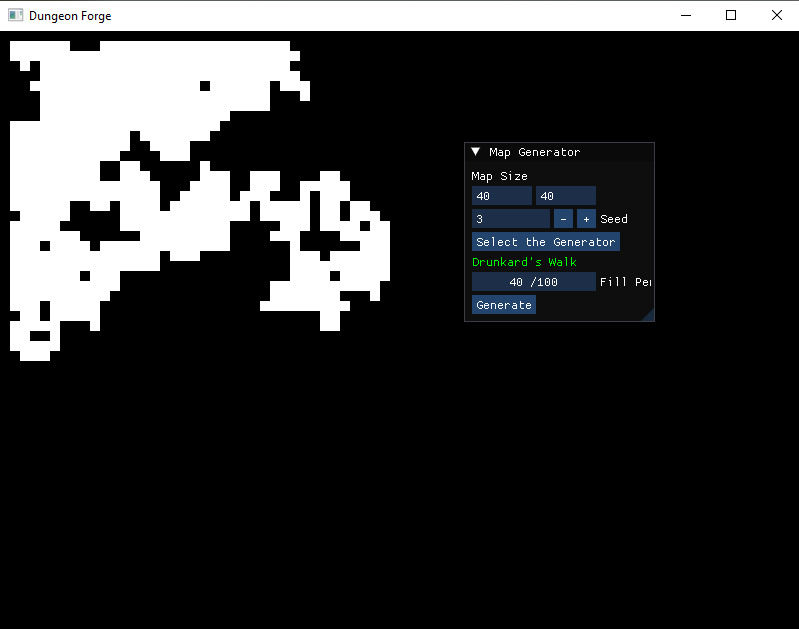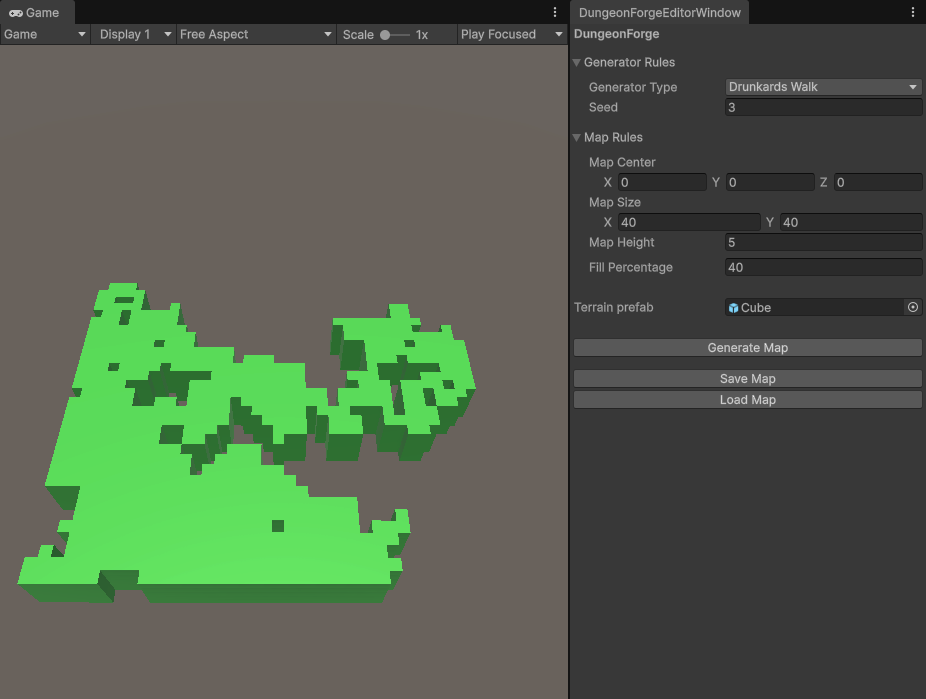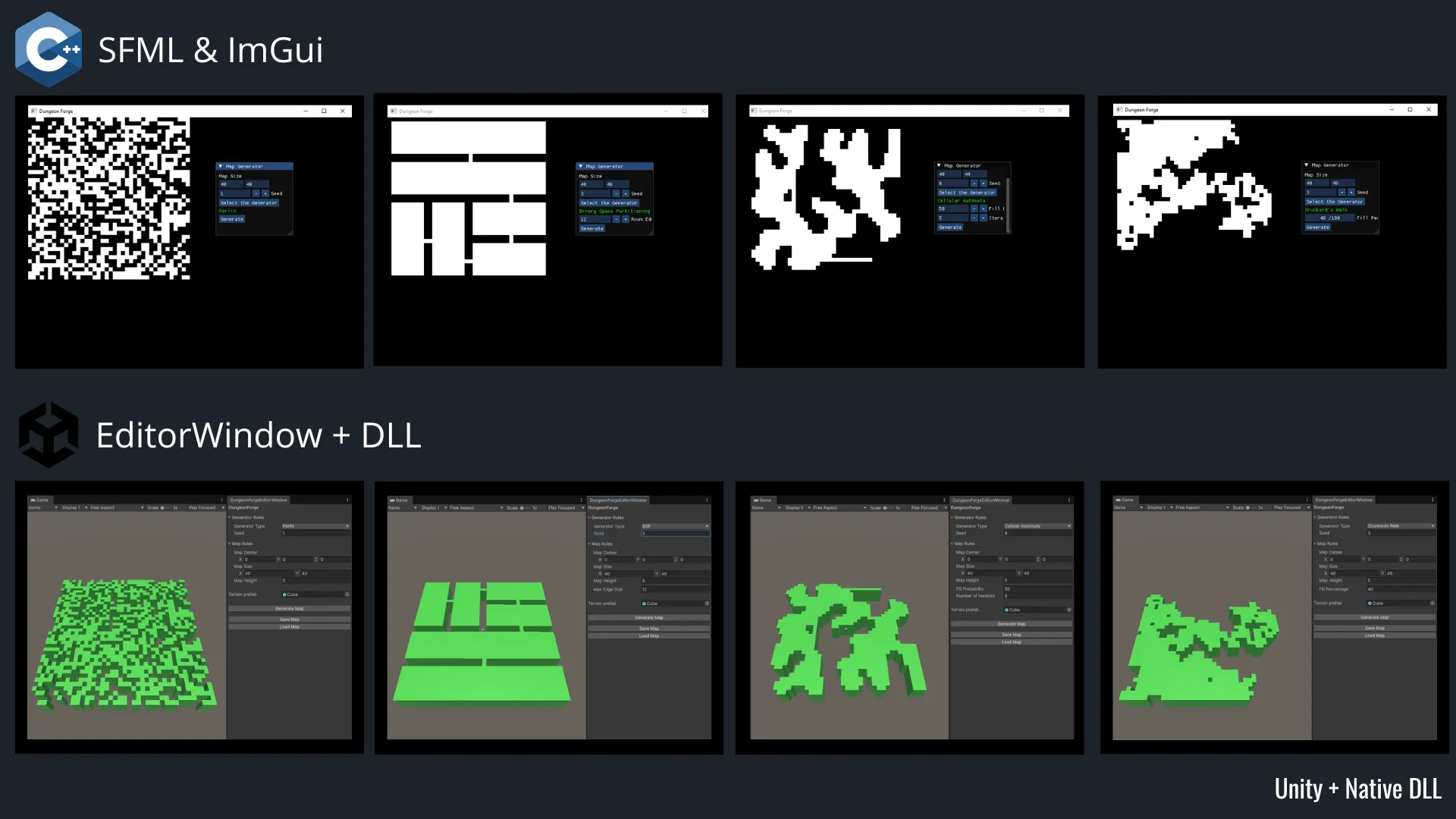
Unity Tips - Creating Native DLLs for Procedural Generation
During my time at Lab4Tech, I was actively preparing for industry-recognized certifications:
- C++ CLA & CPP from the C++ Institute
- Unity Professional Programmer from Unity
I wanted more than textbook knowledge. I needed a real-world project where I could combine high-performance C++ with Unity’s C# ecosystem.
That became the motivation behind Dungeon Forge: a native C++ DLL powering procedural dungeon generation, fully integrated into Unity.
This project was more than just “making a DLL”. It was an exploration into:
- Cross-language interop (C++ ↔ C#).
- Designing efficient, reusable libraries.
- Profiling and optimizing game-related systems.
- Building custom Unity Editor tooling for seamless developer experience.
The Problem: Procedural Generation at Scale
Procedural content generation in Unity often runs into two bottlenecks:
- Performance:
C#alone can be limiting for heavy algorithmic workloads (e.g., cellular automata iterations, BSP tree construction). - Extensibility:
Unity projects rarely expose low-level optimization levers for procedural workflows.
Technical Solution: Dungeon Forge DLL
My goal was to encapsulate advanced map generation algorithms in a native library, making them reusable across projects without rewriting the same logic in Unity each time.
The DLL provides multiple map generation algorithms, each with different use cases:
- Binary Space Partitioning (BSP): Recursive space subdivision for structured dungeons.
- Cellular Automata (CA): Organic cave-like environments.
- Drunkard’s Walk: Random walk-based tunnels, suitable for roguelike layouts.
- Perlin Noise: Used primarily for benchmarking randomness and map density.
I initially experimented with Wave Function Collapse (WFC).
However, its complexity (non-trivial constraint propagation, state explosion, and edge cases)
made it unstable within my initial 10-day timeframe.
This was an important engineering decision: I prioritized robustness and maintainability over incomplete features.
Engineering the Native Library (C++)
Build System & Tooling
- CMake was used for cross-platform build management.
- vcpkg handled dependency management (e.g., SFML, ImGui).
- Tracy Profiler enabled performance instrumentation at the C++ level.
A critical part of the CMake configuration was ensuring proper DLL export symbols:
cmake_minimum_required(VERSION 3.31)
project("DungeonForge")
set(CMAKE_CXX_STANDARD 20)
set(CMAKE_CXX_STRANDARD_REQUIRED ON)
# {... Rest of the CMake File ...}
#DLL EXPORT
# Enable automatic symbol export
SET(CMAKE_WINDOWS_EXPORT_ALL_SYMBOLS ON)
include_directories(include/)
# Collect source files
file(GLOB_RECURSE LIB_FILES src/ *.cpp include/ *.hpp)
# Build shared library
add_library(DungeonForgeLib SHARED ${LIB_FILES})
# Generate export header
include(GenerateExportHeader)
generate_export_header(DungeonForgeLib)
This setup ensured that class methods and functions were properly exposed to Unity.
DLL Export Strategy
C++ classes cannot be directly marshaled into Unity C#. To solve this, I designed a C API layer over my C++ classes:
//dllexport.h
#pragma once
#ifndef EXPORTS
#define DF_API __declspec(dllexport)
#else
#define DF_API __declspec(dllimport)
#endif
The Generator class (encapsulating procedural logic) was then wrapped with C-style exports:
//Generator.hpp
#pragma once
#include "dllexport.h"
#include "Map.hpp"
//{... All the C++ includes needed ...}
class Generator
{
public:
private:
};
extern "C"
{
DF_API Generator* CreateGenerator(unsigned int width, unsigned int height);
DF_API void DeleteGenerator(Generator* instance);
DF_API void Generate(Generator* instance);
// {... Rest of the exported funtions ...}
}
//Generator.cpp
#include "Generator.hpp"
//DLL EXPORT
#pragma region DLL
DF_API Generator* CreateGenerator(unsigned int width, unsigned int height)
{
return new Generator(width, height);
}
DF_API void DeleteGenerator(Generator* instance)
{
delete instance;
}
DF_API void Generate(Generator* instance)
{
if (instance == nullptr) return;
instance->generate();
}
//{... Rest of the Exported functions ...}
This pattern allowed Unity to hold a raw pointer (IntPtr in C#), without needing to understand C++ object layouts.
This is the diagram shows how data and calls move across the language boundary:
Memory Management & Safety
The DLL interface was carefully designed to avoid dangling pointers and leaks:
- Factory/Destructor pattern (CreateGenerator / DeleteGenerator).
- Null-check guards before running operations.
- Seed management via std::mt19937 for reproducible procedural results.
This ensured deterministic behavior while keeping Unity free from memory management concerns.
Unity Integration (C# Wrapper)
DLL Import
On the Unity side, I created a thin C# wrapper using DllImport:
//Generator.cs
private static IntPtr generatorInstance;
[DllImport("DungeonForgeLib.dll")]
private static extern IntPtr CreateGenerator(uint width, uint height);
[DllImport("DungeonForgeLib.dll")]
private static extern void DeleteGenerator(IntPtr generatorInstance);
[DllImport("DungeonForgeLib.dll")]
private static extern void Generate(IntPtr generatorInstance);
//{... Rest of the methods declaration ...}
This allowed Unity to allocate, configure, and trigger generation entirely from managed code:
//Generator.cs
public static void Generate()
{
generatorInstance = CreateGenerator((uint)mapSize.x, (uint)mapSize.y);
SetSeed(generatorInstance, m_seed);
SetAlgorithm(generatorInstance, (int)m_algorithmType);
switch (m_algorithmType)
{
//{... Algorithm parameters ...}
}
Generate(generatorInstance);
GeneratePhisicalMap(m_mapSize, m_mapHeight, m_mapCenter);
}
The biggest challenge here was interop debugging: mismatched calling conventions, struct marshalling, and parameter mismatches all led to runtime crashes. By carefully isolating responsibilities (C++ for algorithms, C# for orchestration), I minimized the error surface.
Here is a diagram showing how the procedural engine runs independently of Unity before passing results back:
Developer Experience: Unity Editor Window
To make the system usable by other developers, I built a custom Unity Editor Window:
//DungeonForgeEditorWindow.cs
[MenuItem("Tools/DungeonForge/MapGenerator")]
static void Init()
{
// Get existing open window or if none, make a new one:
DungeonForgeEditorWindow window = (DungeonForgeEditorWindow)EditorWindow.GetWindow(typeof(DungeonForgeEditorWindow));
window.Show();
}
with the following features:
- Foldout groups for clean organization of algorithm settings.
Example:Foldoutgroups for the “Generator Rules”:
//DungeonForgeEditorWindow.cs
m_generatorRules = EditorGUILayout.Foldout(m_generatorRules, new GUIContent(
"Generator Rules",
"Possibility to change the Type of Algorithm and the Seed used for map generation"));
if (m_generatorRules)
{ /*{... Content of the generator rules ...}*/}
- Undo/Redo support (via Undo.RecordObject).
- Immediate Repaint on changes for responsive UI.
Example: Selecting algorithms viaEnumPopupwith full undo support:
//DungeonForgeEditorWindow.cs
EditorGUI.BeginChangeCheck();
AlgorithmType algorithmType = (AlgorithmType)EditorGUILayout.EnumPopup
(
new GUIContent
(
/*{... Description content ...}*/
), m_algorithmType
);
if (EditorGUI.EndChangeCheck())
{
Undo.RecordObject(this, "Modified AlgorithmType");
m_algorithmType = algorithmType;
DungeonForge.Generator.SetAlgorithmType(m_algorithmType);
EditorUtility.SetDirty(this);
Repaint();
}
- Buttons directly calling DLL functions.
Example:Buttoncalling theGenerate()function of the DLL
//DungeonForgeEditorWindow.cs
if (GUILayout.Button("Generate Map"))
{
DungeonForge.Generator.Generate();
}
This approach meant that designers could iterate procedurally generated maps without writing code.
Here is a diagram showing developer ergonomics: not just code, but how someone actually uses this system.
Bonus: Map Persistence
I implemented JSON-based save/load for maps:
- Save: Serializes grid data (1 = wall, 0 = ground, “\n” = new line) into
JSON.
/// <summary>
/// Save the currently displayed map
/// </summary>
/// <param name="invertLines">if true inverts the Y writing order (starts at the bottom-left)(</param>
public static void SaveMap(bool invertLines = false, bool isDataPersistent = false)
{
SaveData mapData = new SaveData();
mapData.mapSize = m_mapSize;
mapData.mapHeight = m_mapHeight;
string mapString = "";
/*{... Nested for loop on x and y, writing:
"1" walls, "0" ground, "\n" new line
}*/
mapData.mapTiles = mapString;
string json = JsonUtility.ToJson(mapData);
string path;
path = isDataPersistent ? Application.persistentDataPath : Application.dataPath;
File.WriteAllText(path + "/SavedMap.json", json);
}
- Load: Reconstructs physical maps directly from
JSONfiles.
/// <summary>
/// Loads a JSON file and reinterprets it in an instantiated 3D map
/// </summary>
public static void LoadMap(bool wasDataPersistent = false)
{
// 1. Loading of the Map
// 2. Deletion of previous physical map
// 3. Instantiation of loaded map*/
}
- Custom class: Saves data for
JSONparsing:
[System.Serializable]
class SaveData
{
public Vector2Int mapSize;
public uint mapHeight;
public string mapTiles;
}
This feature made maps shareable and persistent, bridging procedural workflows with level design workflows.
Lessons Learned & Engineering Takeaways
-
Interop is brittle
Small mismatches (struct alignment, calling conventions) can crash Unity. Testing in isolation (SFML + ImGui test project) was invaluable before moving into Unity. -
Profiling matters
Using Tracy revealed algorithm bottlenecks (especially with cellular automata iterations). Optimizing random number generation and memory allocations gave noticeable performance gains. -
Abstraction layers pay off
The C API between C++ and Unity simplified debugging and future-proofed the library. -
DX (Developer Experience) is as important as performance
A custom Editor Window transformed the project from “interesting” to “usable.”
Conclusion
This project gave me end-to-end exposure to:
- Building and exporting native C++ DLLs.
- Marshaling data and ensuring safe cross-language integration.
- Profiling and optimizing procedural algorithms.
- Creating intuitive Unity Editor tooling for production use.
Dungeon Forge was more than a side project. It was a demonstration of engineering workflows, blending low-level C++ performance with Unity’s accessibility.
👉 If you’re a Unity or C++ engineer, you’ll recognize the challenges hidden in cross-language systems.
This project taught me how to navigate those pitfalls and design solutions that are both powerful and user-friendly.
